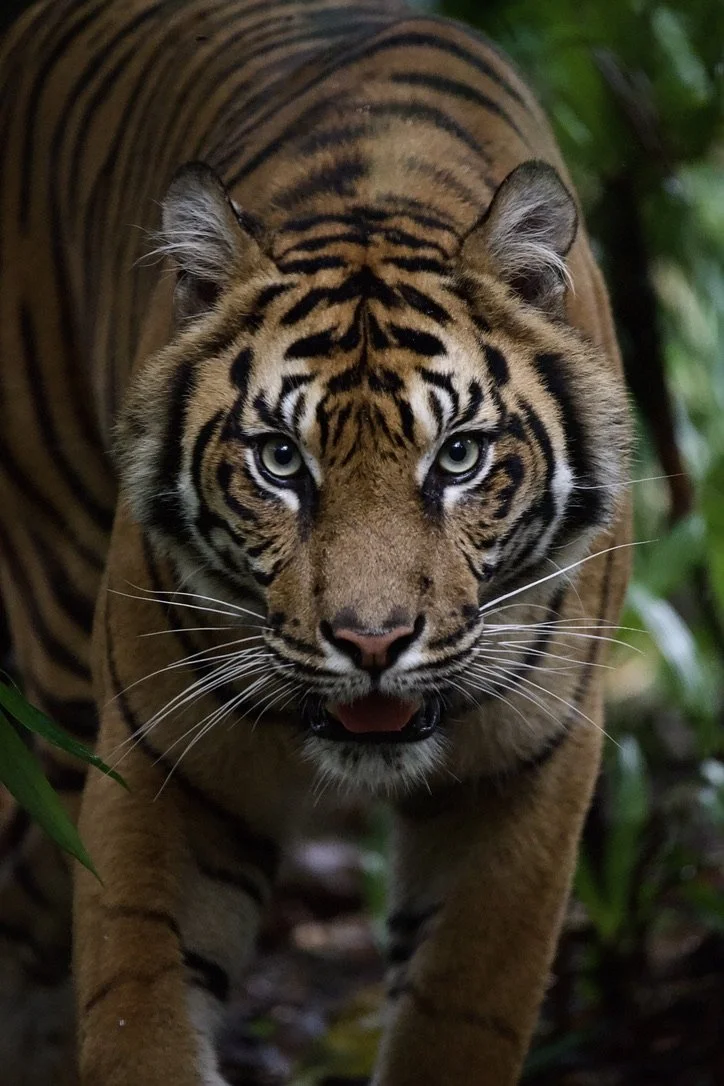Roaring for Change
On International Tiger Day, we join together to honor one of the world's most majestic and endangered species—the tiger.
Known for their grace, strength, and beauty, tigers have captured our imagination for centuries. However, these magnificent creatures face numerous challenges that threaten their survival.
Join us as we delve into the world of tigers, raise awareness about their plight, and highlight the importance of conservation efforts.
The Magnificence of Tigers
Tigers are the largest of the big cats, renowned for their striking orange coats adorned with bold black stripes.
With their powerful build and piercing eyes, they command respect and admiration.
Tigers are not only symbols of beauty and grace but also vital components of their ecosystems.
As apex predators, they help maintain the balance of populations and ensure the health of their habitats.
The Tiger's Plight
Despite their iconic status, tigers are critically endangered.
Poaching, habitat loss, and illegal wildlife trade continue to decimate their populations.
In the past century, tiger numbers have drastically declined due to human activities and habitat fragmentation.
International Tiger Day serves as a crucial reminder of the urgent need to protect these magnificent creatures and their habitats.
Conservation Efforts
International Tiger Day provides an opportunity to highlight the ongoing conservation efforts dedicated to saving tigers.
Governments, conservation organisations, and local communities work tirelessly to protect and restore tiger habitats, combat poaching, and raise awareness about the importance of tiger conservation.
Through initiatives such as anti-poaching patrols, community engagement, and the establishment of protected areas, these efforts aim to secure a future where tigers can thrive.
Endangered Species
Tigers are listed as an endangered species, with only around 3,900 wild tigers remaining in the world. Their populations have declined drastically due to habitat loss, poaching, and human-wildlife conflict.
Habitat Loss
One of the primary threats to tigers is habitat loss. As human populations expand and forests are cleared for agriculture and development, tiger habitats are shrinking, leaving them with less space to roam and find prey.
Poaching
Tigers are hunted for their body parts, which are highly sought after in traditional Chinese medicine and for use in luxury goods. Poaching remains a significant threat to their survival, driving the illegal wildlife trade.
Keystone Species
Tigers play a crucial role in their ecosystems as a keystone species. As top predators, they help maintain a balanced prey population, which in turn impacts the health of the entire ecosystem. The loss of tigers can lead to ecological imbalances.
Conservation Efforts
Various conservation organizations and governments are working together to protect tigers and their habitats. Initiatives include establishing protected areas, anti-poaching measures, and community-based conservation programs to reduce human-wildlife conflict.
Tiger Range Countries
Tigers are found in a range of countries across Asia, including India, Indonesia, Malaysia, Thailand, Nepal, Bhutan, and Russia, among others. International cooperation is essential to address the transboundary issues they face.
Reintroduction Programs
Some conservation efforts involve the reintroduction of tigers into areas where they have been locally extinct. These programs aim to restore tiger populations to their historical ranges and improve the genetic diversity of existing populations.
Overall, conserving tigers requires a combination of efforts to combat poaching, protect their habitats, engage local communities in conservation, and promote international cooperation to safeguard these magnificent creatures for future generations.
Preserving Tiger Habitats
The survival of tigers depends on the preservation and restoration of their habitats. Protecting large, interconnected landscapes and maintaining healthy prey populations are crucial for their long-term survival.
Conservation organisations and governments collaborate to establish protected areas, promote sustainable land-use practices, and engage local communities in conservation efforts.
By supporting these initiatives, we contribute to safeguarding tiger habitats and ensuring the survival of these magnificent creatures.
Combating Illegal Wildlife Trade
Illegal wildlife trade, fuelled by the demand for tiger parts, poses a significant threat to their survival.
Tigers are hunted for their skins, bones, and other body parts, which are sought after in traditional medicine and as luxury items.
International Tiger Day calls for heightened efforts to combat illegal wildlife trade through law enforcement, public awareness campaigns, and stringent penalties for offenders.
By advocating for the eradication of this illicit trade, we protect tigers and preserve their rightful place in our natural heritage.
Educating and Inspiring Change
Education plays a pivotal role in ensuring the long-term survival of tigers.
By raising awareness about their plight, we can inspire individuals, communities, and policymakers to take action.
Educating future generations about the importance of tigers and the need for their conservation fosters a sense of responsibility and stewardship towards these magnificent creatures.
Through storytelling, community events, and social media campaigns, we can ignite passion and drive change for the better.
On International Tiger Day, we come together to celebrate the splendour of tigers and renew our commitment to their protection.
By raising awareness, supporting conservation initiatives, and advocating for stricter measures against poaching and illegal wildlife trade, we can make a difference in securing a future where tigers thrive.
Let us cherish and protect these magnificent creatures, ensuring that their roar continues to resonate in the wild for generations to come.








